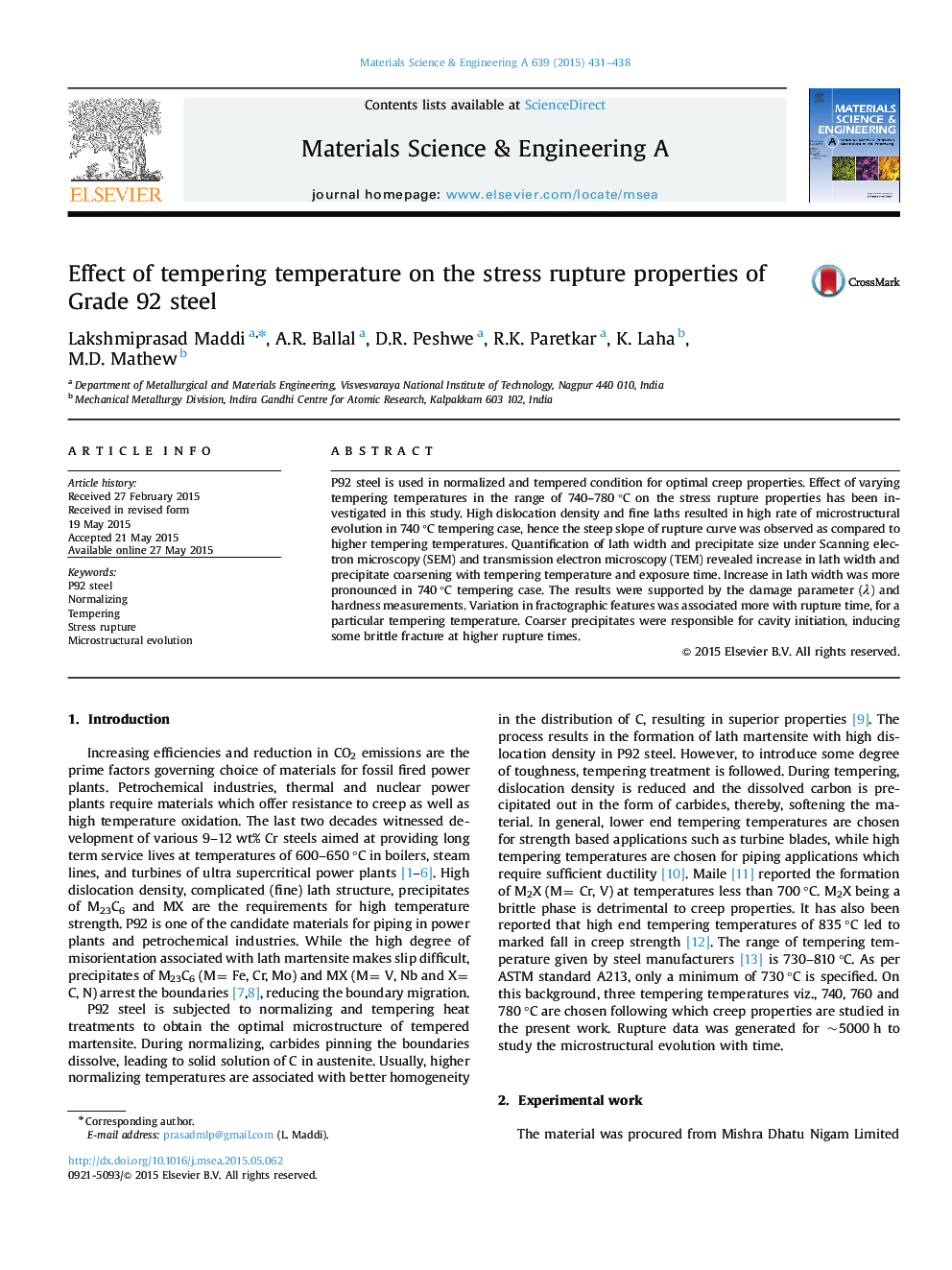| Article ID | Journal | Published Year | Pages | File Type |
|---|---|---|---|---|
| 7977788 | Materials Science and Engineering: A | 2015 | 8 Pages |
Abstract
P92 steel is used in normalized and tempered condition for optimal creep properties. Effect of varying tempering temperatures in the range of 740-780 °C on the stress rupture properties has been investigated in this study. High dislocation density and fine laths resulted in high rate of microstructural evolution in 740 °C tempering case, hence the steep slope of rupture curve was observed as compared to higher tempering temperatures. Quantification of lath width and precipitate size under Scanning electron microscopy (SEM) and transmission electron microscopy (TEM) revealed increase in lath width and precipitate coarsening with tempering temperature and exposure time. Increase in lath width was more pronounced in 740 °C tempering case. The results were supported by the damage parameter (λ) and hardness measurements. Variation in fractographic features was associated more with rupture time, for a particular tempering temperature. Coarser precipitates were responsible for cavity initiation, inducing some brittle fracture at higher rupture times.
Related Topics
Physical Sciences and Engineering
Materials Science
Materials Science (General)
Authors
Lakshmiprasad Maddi, A.R. Ballal, D.R. Peshwe, R.K. Paretkar, K. Laha, M.D. Mathew,
